MORE THAN JUST SWEDISH MEATBALLS
Our favorite moments and recipes from Finland & Sweden's Lapland ❄️🌲
My dad and I recently got back from our trip through the Finish and Swedish Lapland (we were above the Arctic Circle!) and to say it was “quite the adventure” would be an understatement. Even with the advice from my Mom and Nat, who went on the same trip last year, we were still not prepared to be so physically (and emotionally lol) pushed to our limit. Let’s just say sleeping in an ice hotel is not for the faint of heart — my water bottle froze, my face was numb, and my dad was snoring 😑. But the beautiful snowshoeing hikes, dog sledding through a tree-lined path, vast snow-covered views of the Arctic, seeing the northern lights dance across the sky, and spending some quality father-daughter time truly made it a trip to remember!
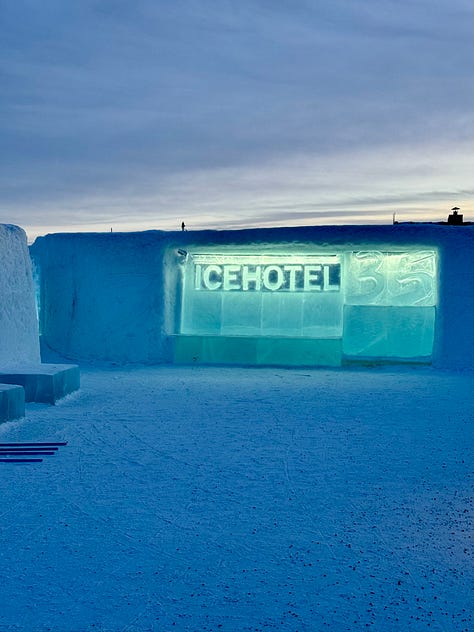
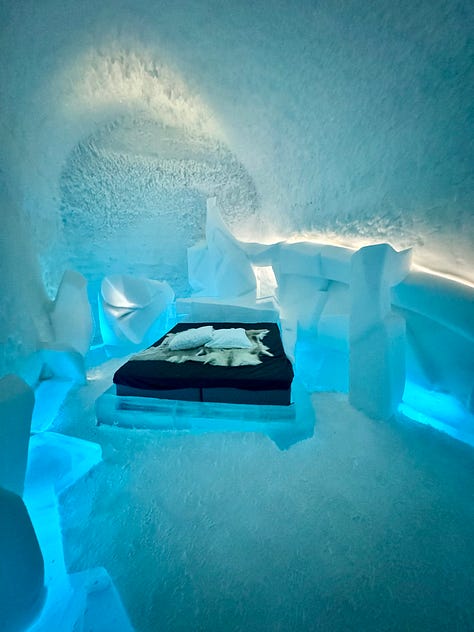
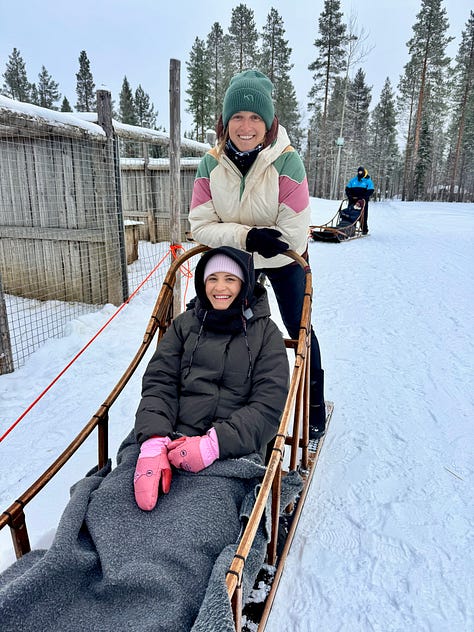
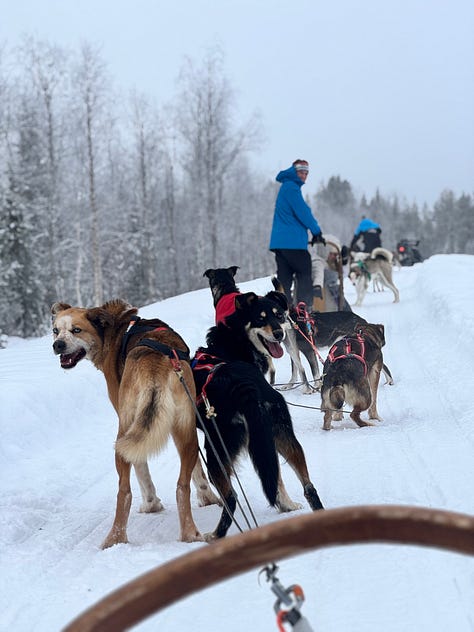
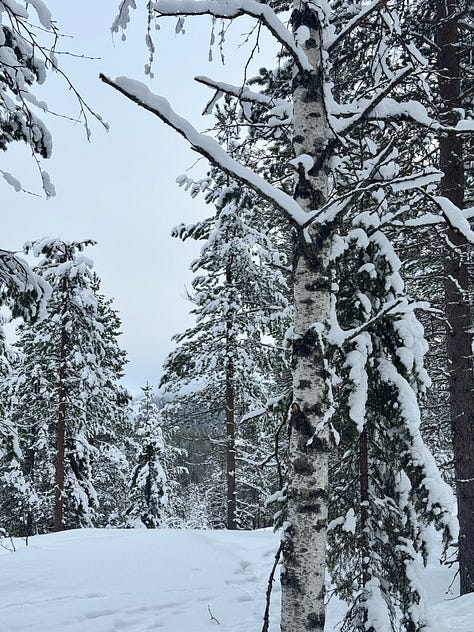
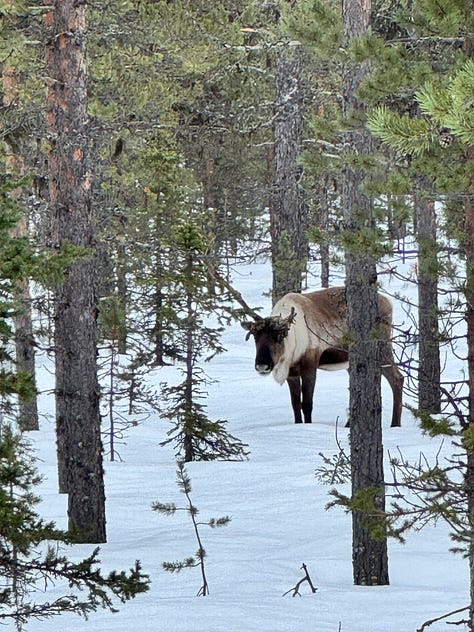
This week, we combined our trip experiences to create a Digest full of our favorite moments and recipes. Sprinkling in a little about the region’s culture and cuisine outside of IKEA, meatballs, and saunas (although we did enjoy 2/3 while we were there😉).
Before we visited Finland and Sweden’s Lapland, we were unfamiliar with the Sámi people who are indigenous to the region. For thousands of years, the Sámi have had a deeply ingrained relationship with reindeer and reindeer herding — serving as their food, clothing, transport, and trade.
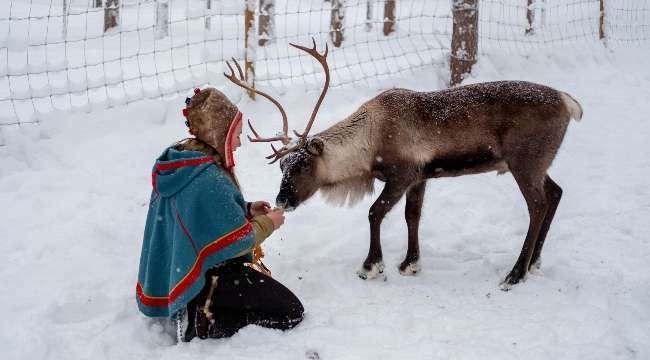
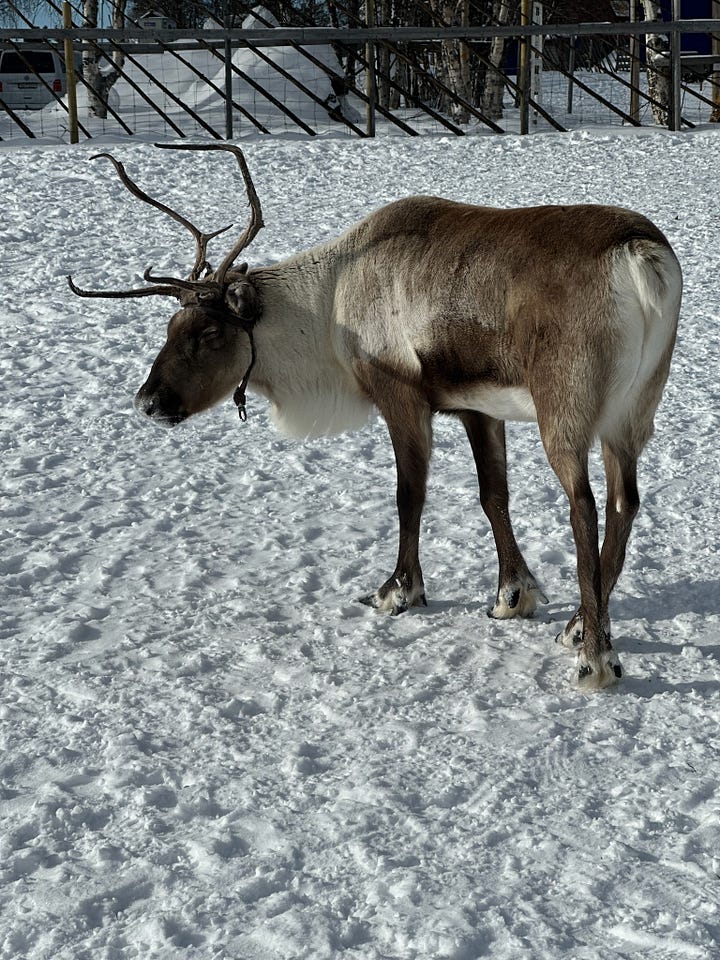
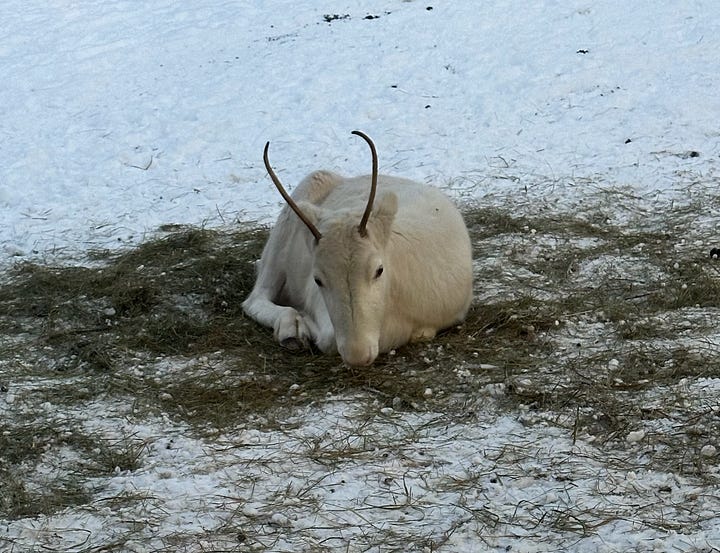
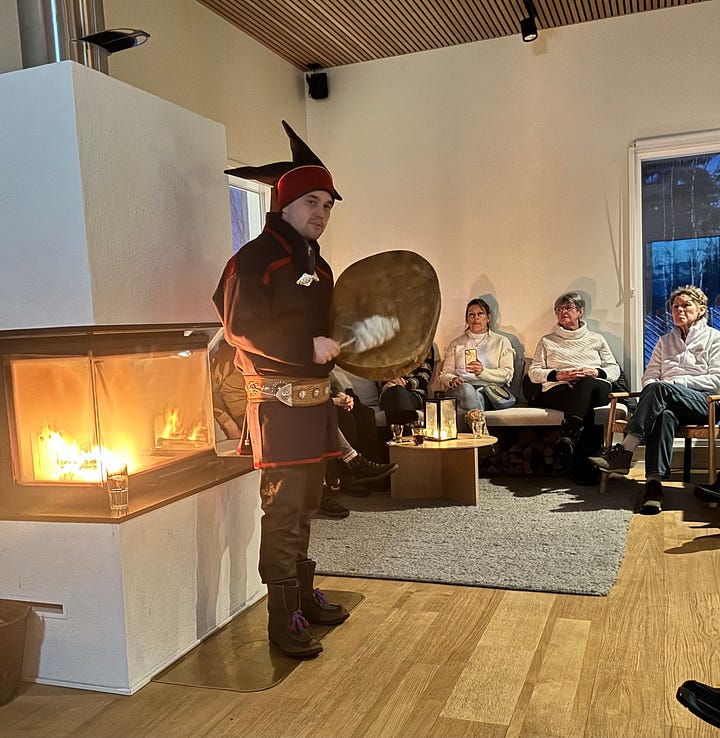
During a visit to a reindeer farm, our Sámi guide explained the culture of the Sámi diet. Since they live in such a remote and unforgiving environment, they only eat what they can get locally (reindeer, berries, mushrooms). And because they cannot access most vegetables, hearing parents tell their kids to “eat your vegetables” is not a common refrain at the Sámi dinner table (lucky kids lol). However, their diet does not lack nutrients even without veggies, instead, they get them from the reindeer they consume — high-quality fresh reindeer meat is full of vitamins D and C. Unlike our highly processed diets, the quality and freshness of the ingredients in Sámi cuisine provide essential nutrients their bodies need to survive without imported vegetables and additional supplements.
Our Sámi guide made us a very delicious mushroom soup. She explained that it was so tasty because of its simple ingredients — only mushrooms, cream, salt, and pepper. None of us believed her 😂 but to my surprise, I made a very similar tasting version at home with only a few extra ingredients (you’re welcome Lapland Backroads readers).
We ate our mushroom soup with a reindeer and lingonberry jam sandwich 😐 but another traditional (and more palatable) Lapland dish to go with this soup (that you can actually make at home) is a Scandinavian Cheese Toastie. A Scandi Cheese Toastie is basically the Nordic/Scandinavian version of a grilled cheese. Like much of the meals north of the Arctic Circle, these are simple — just cheese and bread grilled on an open fire — which is also what makes them so perfect. And just like the mushroom soup, they are a fitting embodiment of the Swedish philosophy of lagom.
Translated, lagom means “just the right amount” or “not too much, not too little.” It encapsulates the spirit of balance and moderation and finding contentment in satisfaction. This concept is a bit hard to grasp for Americans due to our “bigger is better” mindset. But “excess” does not always guarantee “better” — eating until you’re stuffed feels worse than being comfortably full. The beauty of lagom is finding harmony in enjoying what is “just right,” while resting and relaxing in the fulfillment of the present, not yearning for more.
Despite having only a few ingredients, recreating a mid-snowshoe Scandi Cheese Toasty prepared fireside in a tiny hut in northern Finland required a bit of research to get it just right at home.
First is the bread: the two most commonly used breads for making Cheese Toasties in the Lapland are an oat flour flatbread called Rieska (this is what we had at our campfire) and a Finnish dark-seeded rye. In the States, an alternative for the flatbread is Arnold Multigrain Sandwich Thins or Naan. For the Finnish rye, Trader Joe’s has a delicious Scandinavian seeded rye bread (which is what we decided to use).
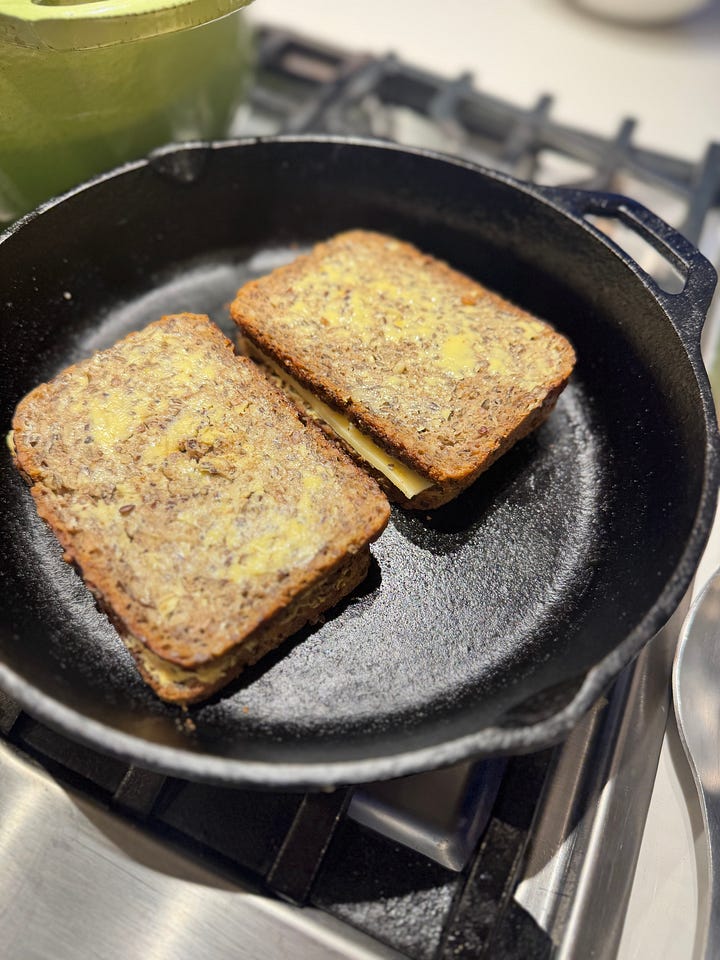

Now for the cheeses:
Cheese, particularly "Finnish Squeaky Cheese" or “Bread Cheese” (Leipäjuusto/Juustoleipä) is a significant part of Lapland culture. This type of cheese is similar to Halloumi and is often eaten grilled on its own with cloudberry jam or in coffee (?!).
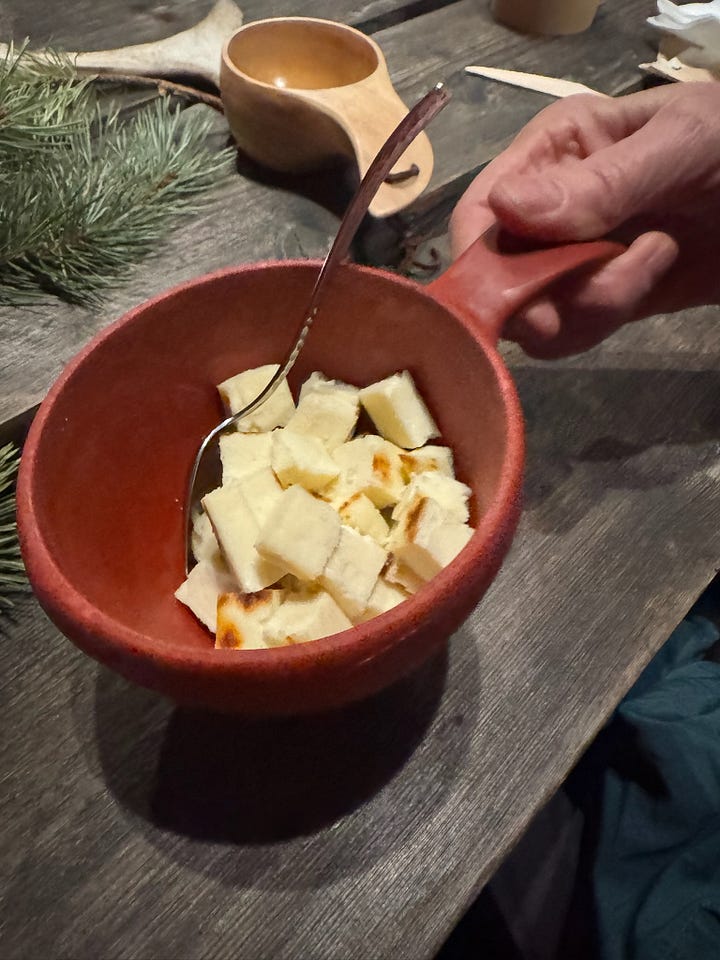
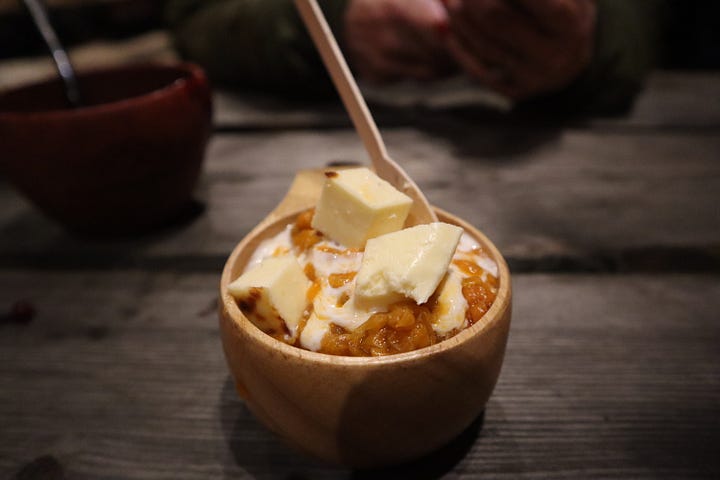
In a Scandinavian Cheese Toastie, it is more common to use Vasterbotten (salty, firm, and similar to Parmesan but not crumbly), Hushållsost (known for its buttery flavor, ability to melt, and similar to Monterey jack, or a firmer Mozzarella), or Oltermanni (typically served on rye, and similar to Havarti). Since we are using a seeded-rye bread we opted for Havarti (which is also very easy to find at home).
While our Lapland toasties did not have Dijon mustard, it is a common addition in most Scandinavian versions. We included it in this recipe and we liked the added tanginess of the mustard with the mild cheese.
You can cook this on a cast iron skillet. But because our Lapland toastie was grilled over an open fire, they also make a fun grilling or campfire meal in the summer!
There is a restaurant in Stockholm called Riche known for its traditional Swedish dishes and a menu that follows the seasons. We got Swedish meatballs (of course), Toast Skagen, Arctic Char, beer, cider, and sparkling wine 🩷. Everything was outstanding! The Swedish meatballs really were out of this world, but since we’re going beyond the meatballs in this Digest, we decided to recreate the equally delicious Toast Skagen.
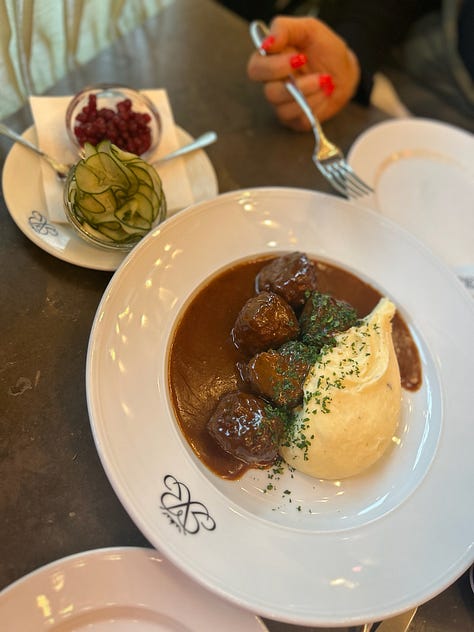
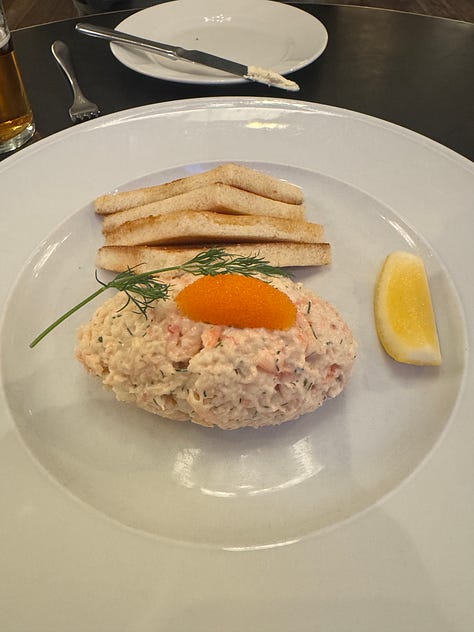
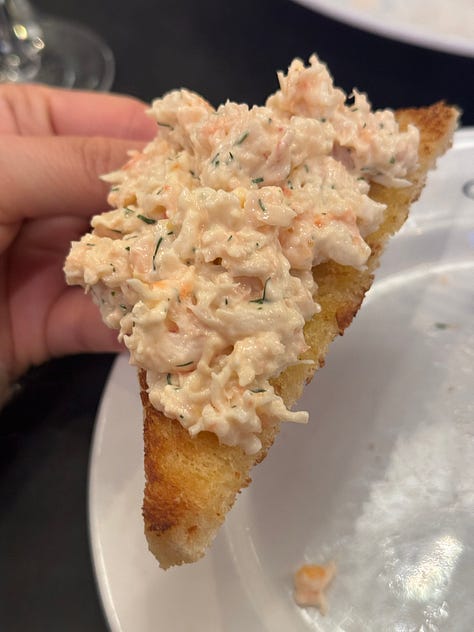
Toast Skagen is a Swedish appetizer consisting of pieces of toasted bread served with shrimp salad. The shrimp salad is a mayo and creme fraiche/sour cream-based salad using tiny shrimp garnished with dill and roe. We chose not to use roe in our at-home version, and since we couldn’t find small enough shrimp we used the langoustine tails from Trader Joe’s in its place (10/10 recommend). Toast Skagen is a great lunch choice (as an alt to tuna salad) or an interesting app to serve or bring to a party (you could easily swap out the toast for crackers too).
The Swedes may have claim over lagom, but Finland was recently voted the “Happiest Nation on Earth” for the eighth straight year in a row! And maybe they can thank their love of the Finnish Long Drink for keeping their spirits (no pun intended) so high 🙌🏻.
The Finnish Long Drink is a popular mixed drink traditionally made with gin, lemon, white grapefruit juice, and grapefruit soda. The drink originated in Finland during the 1952 Helsinki Summer Olympics as a way to provide a refreshing and easily served alcoholic beverage for athletes and visitors. Everyone fell in love with the drink and bars continued to serve it throughout the country after the Games closed. It is now a staple in Finnish bars.
It’s recently made its way stateside as a canned beverage alternative to beer or hard seltzer. While we are fans of the cans available here, nothing compares to a fresh Finnish Long Drink straight from a tap. It’s grapefruity, crisp, and satiating and we think it tastes a lot like Fresca lol.
You could easily buy the Finnish Long Drinks in a can at your local liquor or grocery store, but making it at home is easier than you think and even more refreshing! Plus you can customize it to your taste and control the quality of ingredients that go in it.
The Finnish Long Drink calls for white grapefruit juice, but it can be hard to find, so we just used regular grapefruit juice instead. We made a few different versions as we played around with the recipe. Our first version used Fever Tree grapefruit soda, which resulted in a more grapefruit-forward-tasting Long Drink. But since we think the original Finnish Long Drink tastes like Fresca, we opted to use half of a can of Fresca in the second version. Both are very good and very drinkable 😬. We also tried adding a splash of cranberry juice to each for a cranberry-flavored Long Drink which we loved and highly recommend! Feel free to play around with the amounts and ingredients to create a Finnish Long Drink that is perfect for you. Just be sure to serve it in a tall beer glass with a grapefruit wedge!
Swedish candy (and we aren’t just talking Swedish Fish) has become a phenomenon in the U.S. So of course it was a must to visit a candy store while in Sweden. This particular store in Stockholm had walls lined with treats and sweets. And since we’ve watched our fair share of Swedish candy TikTok reviews, we know what’s up.
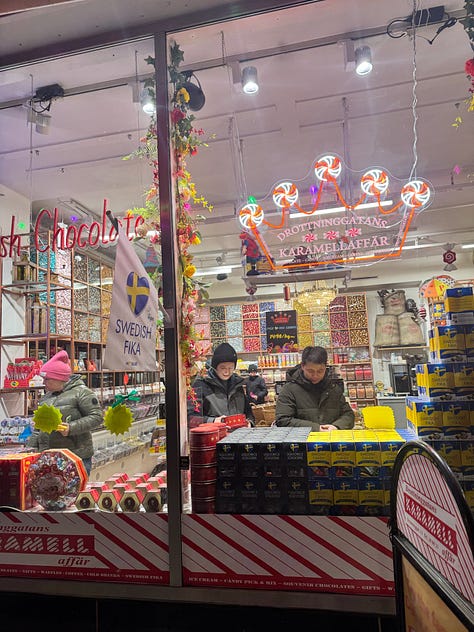
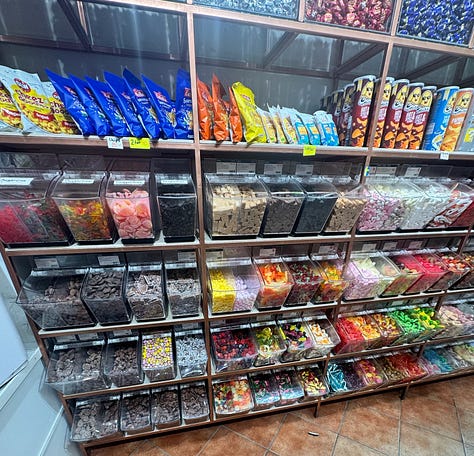

The texture of all the gummy candies is pleasantly surprising. They are perfectly soft but still chewy, and the flavor combos are elite. If you come across a Swedish candy store in the U.S. stop in and make sure you grab the Bubs and Sour Skulls!
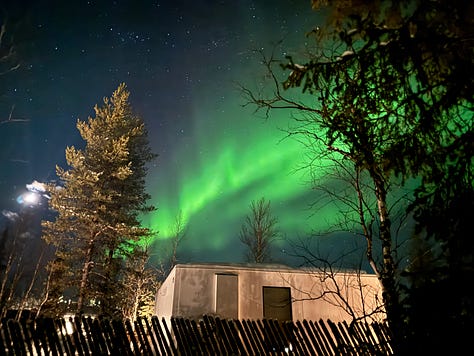
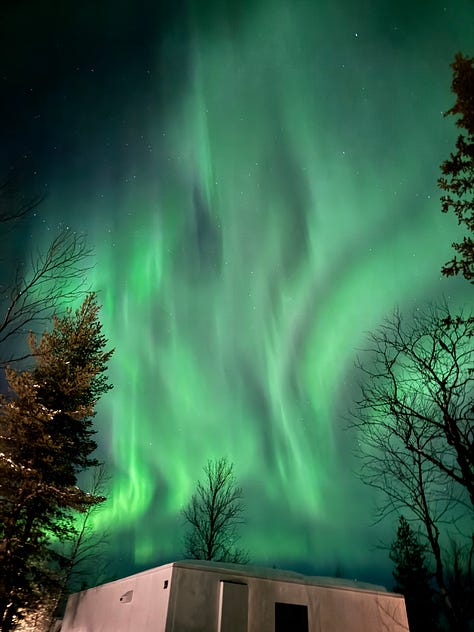
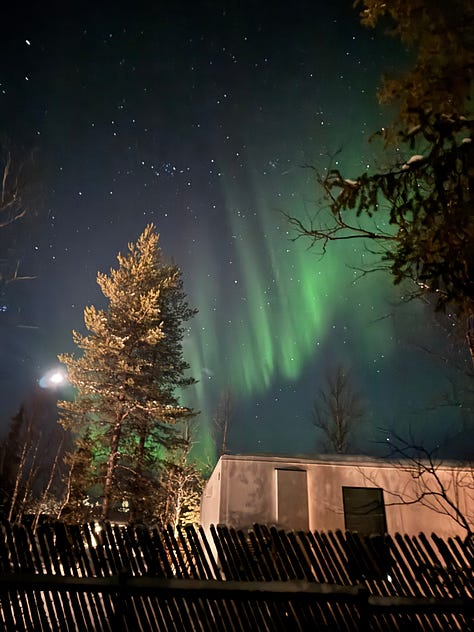
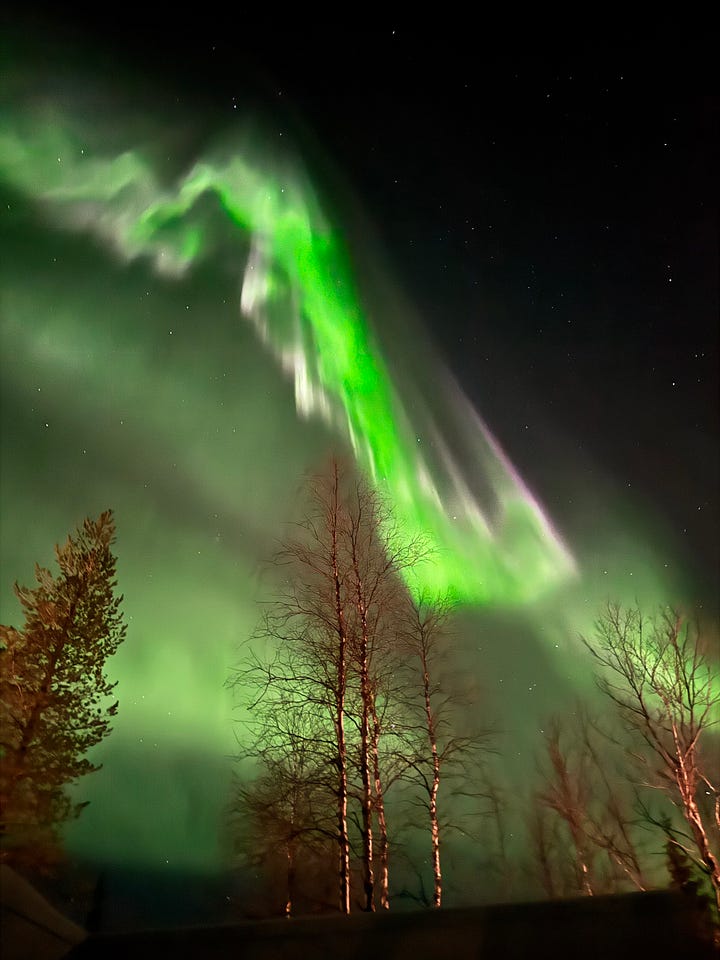
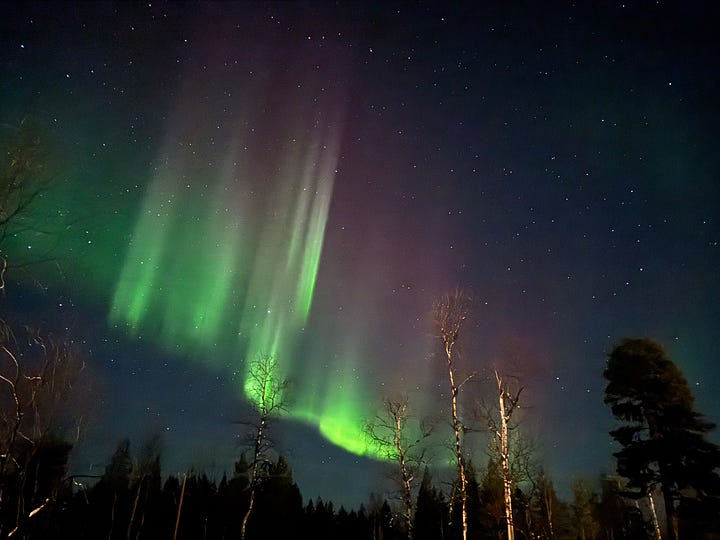
Last but definitely not least, the pièce de résistance and true highlight of the trip - the Northern Lights. The Sámi people have a ton of myths about the Aurora Borealis. Some believe they’re the souls of lost loved ones watching over you. Others feel they are a bad omen — so you should never whistle at the Northern Lights for fear you will draw their attention. In any case, they are the most magnificent thing we’ve ever seen, and for this alone, we would brave another night in an ice room.
THANKS FOR READING!
Cheers 🥂
Hil & Nat
Don’t forget you can access the entire recipe library with all your favs here.
















